北师大版(2019)必修2:Unit 4 Information technology Lesson 1 Avatars-课件-(45张ppt)
文档属性
| 名称 | 北师大版(2019)必修2:Unit 4 Information technology Lesson 1 Avatars-课件-(45张ppt) | 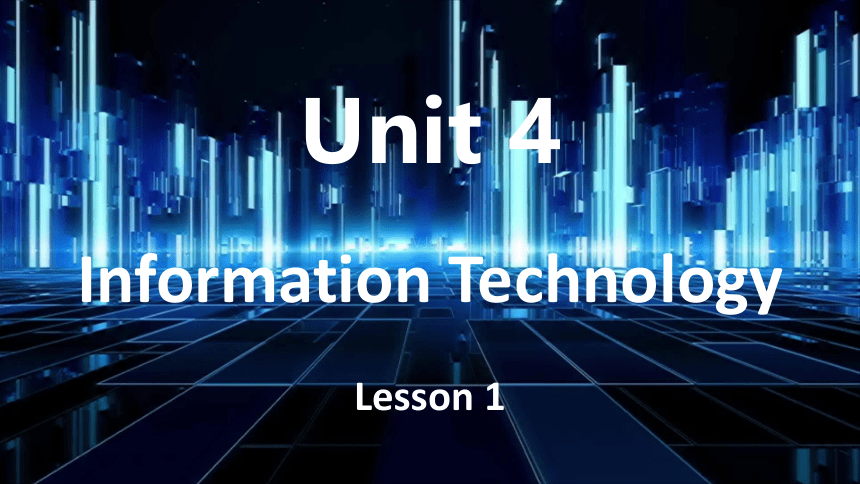 | |
| 格式 | zip | ||
| 文件大小 | 2.8MB | ||
| 资源类型 | 教案 | ||
| 版本资源 | 北师大版(2019) | ||
| 科目 | 英语 | ||
| 更新时间 | 2021-11-22 19:29:03 | ||
图片预览

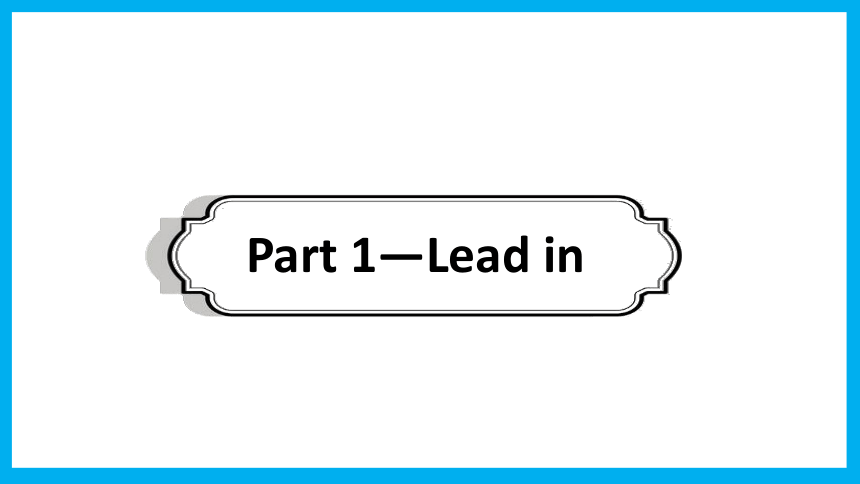

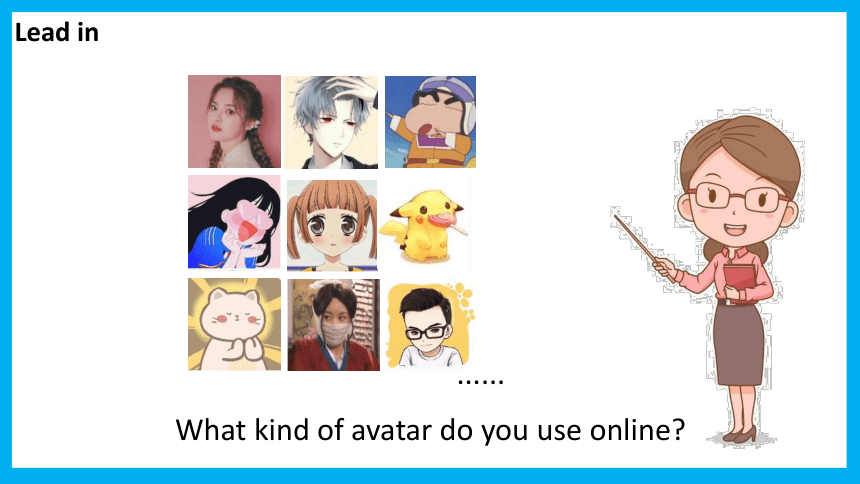
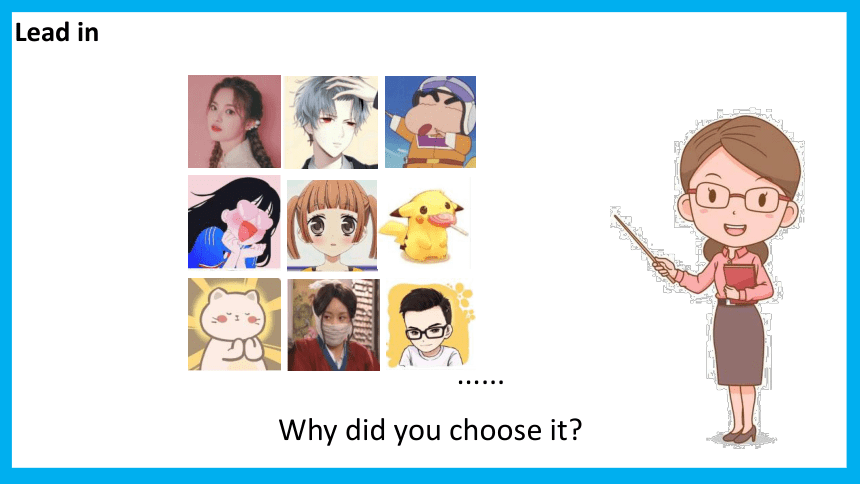

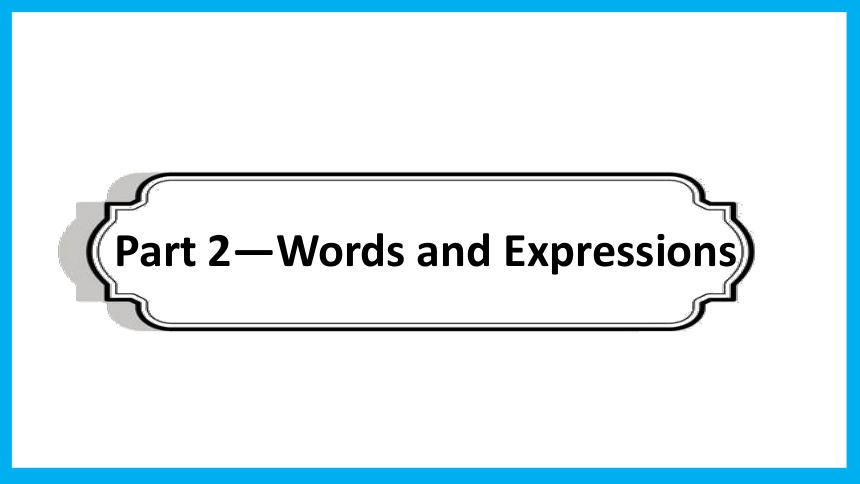
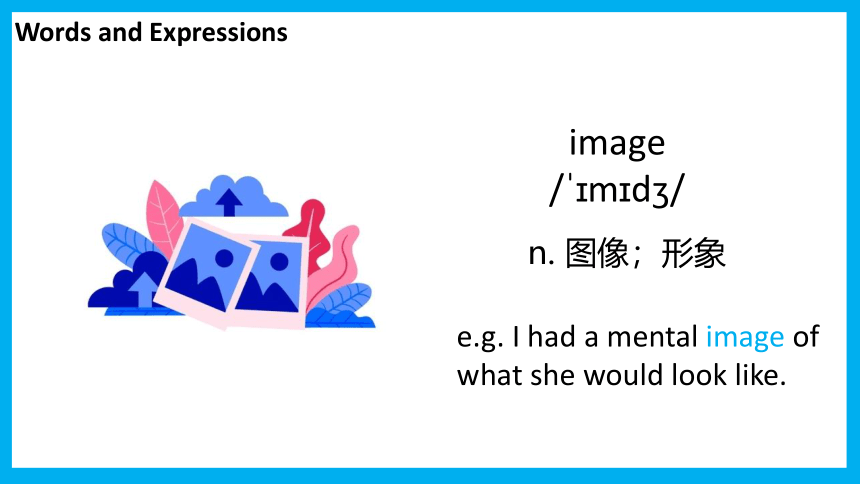
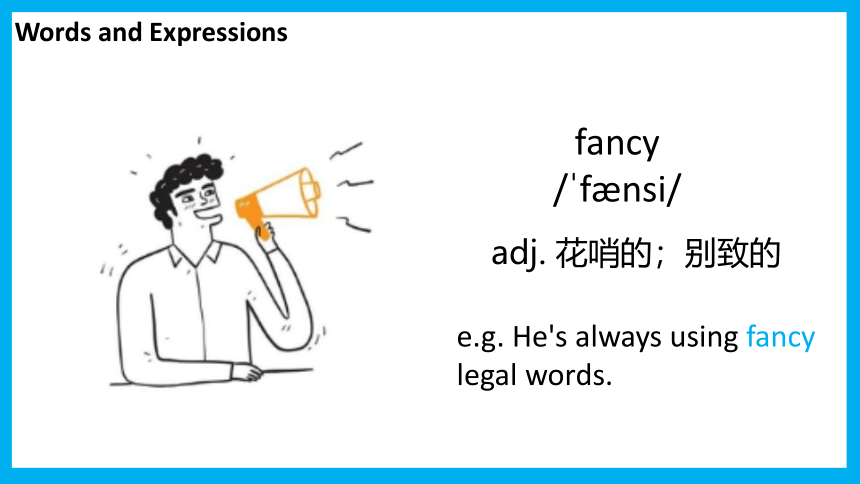
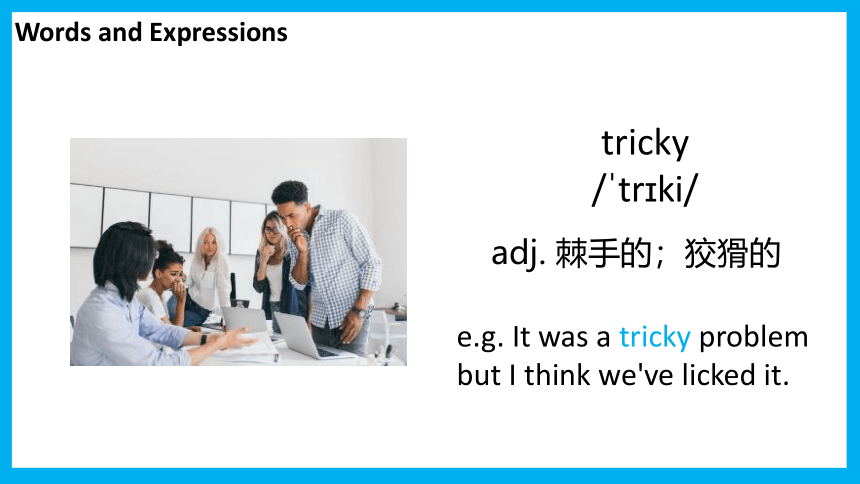
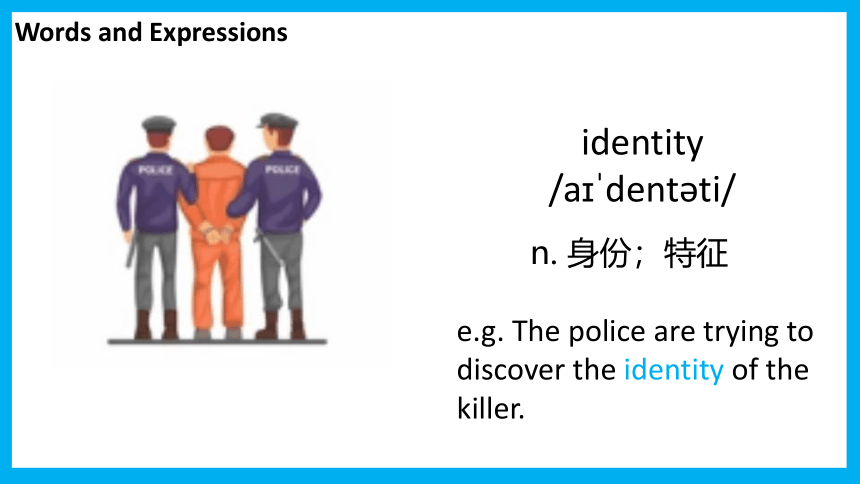
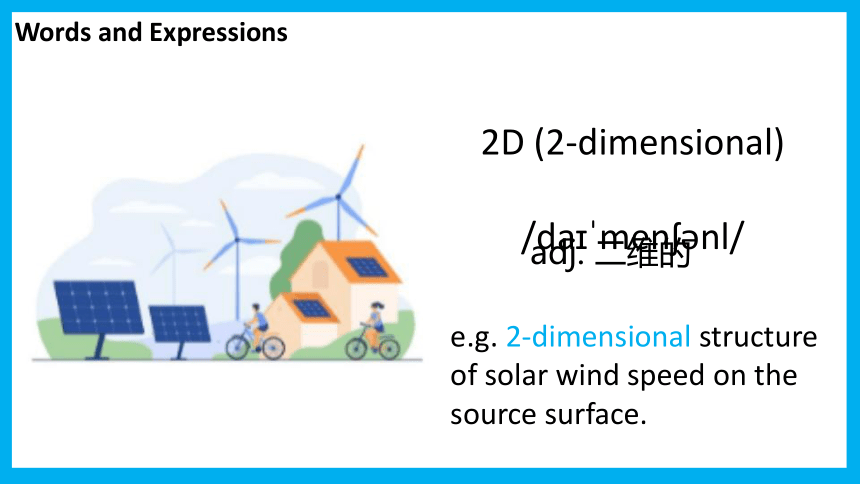
文档简介
(共45张PPT)
Information Technology
Unit 4
Lesson 1
Part 1—Lead in
Lead in
Do you use these apps in your daily life
......
Lead in
What kind of avatar do you use online
......
Lead in
Why did you choose it
......
Lead in
What is an avatar
a digital identity; in computing, an image which represents you in onlion games, chat rooms, etc., and which you can move around the screen using the mouse or keys
Part 2—Words and Expressions
Words and Expressions
image
/ m d /
n. 图像;形象
e.g. I had a mental image of what she would look like.
Words and Expressions
fancy
/ f nsi/
adj. 花哨的;别致的
e.g. He's always using fancy legal words.
Words and Expressions
tricky
/ tr ki/
adj. 棘手的;狡猾的
e.g. It was a tricky problem but I think we've licked it.
Words and Expressions
identity
/a dent ti/
n. 身份;特征
e.g. The police are trying to discover the identity of the killer.
Words and Expressions
2D (2-dimensional)
/da men nl/
adj. 二维的
e.g. 2-dimensional structure of solar wind speed on the source surface.
Words and Expressions
variety
/v ra ti/
n. 多样化,变化
e.g. He resigned for a variety of reasons.
Words and Expressions
instant
/ nst nt/
adj. 即时的;立刻的,马上的
e.g. She took an instant dislike to me.
instant messenger 即时通讯
Words and Expressions
sex
/seks/
n. 性别
e.g. How can you tell what sex a fish is
Words and Expressions
sensible
/ sens bl/
adj. 朴素实用的;明智的
e.g. She's a sensible sort of person.
Words and Expressions
creativity
/ kri e t v ti/
n. 创造力;独创性
e.g. There may be a link between madness and creativity.
Words and Expressions
blog
/bl ɡ/
n. 博客;网络日志
v. 发表博客
e.g. And she started to write a blog against the Taliban.
Words and Expressions
obviously
/ bvi sli/
adv. 明显地;显而易见地
e.g. He was obviously drunk.
Words and Expressions
experiment
/ k sper m nt/
vt.&vi. 做实验
n.实验
e.g. Many people do not like the idea of experiments on animals.
Words and Expressions
nowadays
/ na de z/
adv. 现今;现时
e.g. Nowadays most kids prefer watching TV to reading.
Words and Expressions
hairstyle
/ he sta l/
n. 发型;发式
e.g. Your hairstyle is the style in which your hair has been cut or arranged.
Words and Expressions
selection
/s lek n/
n.供选择的同类物品;选择
e.g. The final team selection will be made tomorrow.
Words and Expressions
type
/ta p/
e.g. There are three main types of contract(s).
vt.&vi. 打字
n. 类型,种类
Words and Expressions
concern
/k n s n/
n. 担忧,忧虑
vt. 与……有关
e.g. Don't interfere in what doesn't concern you.
Words and Expressions
virtual
/ v t u l/
adj. 虚拟的;模拟的
e.g. New technology has enabled development of an online ‘virtual library’.
Words and Expressions
cheat
/t i t/
vt. 欺骗;欺诈
e.g. He cheated his way into the job.
Words and Expressions
view
/vju /
vt. 看;把……视为
e.g. When the car was first built, the design was viewed as highly original.
Part 3—Reading comprehension
Read and think
Before reading, you can predict these questions:
1. What is the definition of avatars
2. When was the first avatar invented
3. What are some interesting avatars or some interesting stories about avatars
4. What is the function of avatars now?
5. What’s the relationship between one’s avatar and his/her personality
6. What influences us to choose or change our avatars
7. Will avatars play a more and more important role
Read and think
The avatar you choose says a lot about you. The article will help you understand your choice of avatars better.
definiton
Read and think
HIstory
sth. interesting about avatars
Purpose
Read and think
Function
Purpose
Read and think
concerns and hope
Read and think
Read again. Complete the information below.
The first simple 2D avatars appeared in role-playing computer games.
Avatars were being used in web chats like instant messenger.
The avatar you choose says a lot about your personality and avatars let you express yourself.
People spend so much time in virtual worlds that they are becoming afraid of meeting people in the real world.
People look forward to a time when their avatar will act just like a real person and travel around bigger, more exciting virtual worlds.
Avatars give you room for creativity. People can create avatars and creat new identities that do not look or act like their real selves.
Read and think
Pair work. Ask and answer questions about avatars using the information in Activity 4. Then introduce avatars to your partner.
1. What is an avatar
2. How have avatars developed over decades
An avatar is the digital identity you use online.
The first simple 2D avatars appeared in role- playing computer games in the 1980s. By the late 1990s, they has been used in web chats like instant messenger. Nowadays, avatars are everywhere.
Read and think
3. How do people use avatars
4. What are people’s views on the use of avatars
People use avatars to express themselves. They use avatars to create new identities that do not look or act like their real selves. People also use avatars to represent themselves. They use or create avatars that look more of less like them and act like them.
Some users worry that they’re spending too much time in ritual worlds and the use of several avatars can also be a risk. Others view avatars in a more positive light. They look forward to a time when their avatar will act like a real person and travel around bigger, more exciting virtual worlds.
Show time!
Read and think
Focus on language
digital identities ___________
a selection of ___________
creat your own images ___________
express yourself ___________
room for creativity ___________
a few concerns ___________
in virtual worlds ___________
a source of risk ___________
cheat others online ___________
in a positive light ___________
数字身份
……的选择
创作你自己的图像
表达自我
创造空间
一些疑虑
在虚拟世界中
风险的来源
在网络上欺骗他人
以积极的态度
Focus on language
Read the sentences. Write P below the underlined parts refer to the past and PF below the underlined parts that refer to the future in the past.
1. Yet, very few people knew that future avatars would have such a wide variety of forms and uses.
2. When people stared creating their own avatars, they discovered that they were going to have the power to create new identities that did not look or act like their real selves at all.
3. Many internet users realised that their avatars would be seen by many people, not just their friends.
P
P
P
PF
P
PF
PF
过去将来时:表示就过去某一时间而言,将来某一时刻或某一段时间正在进行的动作。
Focus on language
结构:
When you asked Li Lei for help, he would never refuse you.
He said that I was going to be sent to meet her at the railway station.
The building was to be completed next month.
He was about to have lunch when the bell rang.
(1) would + 动词原形。
(2) was / were going to + 动词原形。
(3) was / were to + 动词原形。
(4) was / were about to + 动词原形。
Focus on language
Have a try!
Complete the sentences talking about the future in the past.
1. In the 1990s, few people knew that ...
2. When computers were invented, it was believed that...
3. In the past few years, users of smartphones realised that...
4. The conveniecnce of the Internet made Internet users discover that ...
5. When avatars first appeared in the 1980s, few people believed that...
Express yourself
Pair work. Create your own avatar. Introduce it to your partner.
What does it look like
Why did you decide to create it this way
Where would you use it
Part 4—Homework
Homework
Recite the key words, expressions and grammar.
Review the whole text and finish the task below.
Information Technology
Unit 4
Lesson 1
Part 1—Lead in
Lead in
Do you use these apps in your daily life
......
Lead in
What kind of avatar do you use online
......
Lead in
Why did you choose it
......
Lead in
What is an avatar
a digital identity; in computing, an image which represents you in onlion games, chat rooms, etc., and which you can move around the screen using the mouse or keys
Part 2—Words and Expressions
Words and Expressions
image
/ m d /
n. 图像;形象
e.g. I had a mental image of what she would look like.
Words and Expressions
fancy
/ f nsi/
adj. 花哨的;别致的
e.g. He's always using fancy legal words.
Words and Expressions
tricky
/ tr ki/
adj. 棘手的;狡猾的
e.g. It was a tricky problem but I think we've licked it.
Words and Expressions
identity
/a dent ti/
n. 身份;特征
e.g. The police are trying to discover the identity of the killer.
Words and Expressions
2D (2-dimensional)
/da men nl/
adj. 二维的
e.g. 2-dimensional structure of solar wind speed on the source surface.
Words and Expressions
variety
/v ra ti/
n. 多样化,变化
e.g. He resigned for a variety of reasons.
Words and Expressions
instant
/ nst nt/
adj. 即时的;立刻的,马上的
e.g. She took an instant dislike to me.
instant messenger 即时通讯
Words and Expressions
sex
/seks/
n. 性别
e.g. How can you tell what sex a fish is
Words and Expressions
sensible
/ sens bl/
adj. 朴素实用的;明智的
e.g. She's a sensible sort of person.
Words and Expressions
creativity
/ kri e t v ti/
n. 创造力;独创性
e.g. There may be a link between madness and creativity.
Words and Expressions
blog
/bl ɡ/
n. 博客;网络日志
v. 发表博客
e.g. And she started to write a blog against the Taliban.
Words and Expressions
obviously
/ bvi sli/
adv. 明显地;显而易见地
e.g. He was obviously drunk.
Words and Expressions
experiment
/ k sper m nt/
vt.&vi. 做实验
n.实验
e.g. Many people do not like the idea of experiments on animals.
Words and Expressions
nowadays
/ na de z/
adv. 现今;现时
e.g. Nowadays most kids prefer watching TV to reading.
Words and Expressions
hairstyle
/ he sta l/
n. 发型;发式
e.g. Your hairstyle is the style in which your hair has been cut or arranged.
Words and Expressions
selection
/s lek n/
n.供选择的同类物品;选择
e.g. The final team selection will be made tomorrow.
Words and Expressions
type
/ta p/
e.g. There are three main types of contract(s).
vt.&vi. 打字
n. 类型,种类
Words and Expressions
concern
/k n s n/
n. 担忧,忧虑
vt. 与……有关
e.g. Don't interfere in what doesn't concern you.
Words and Expressions
virtual
/ v t u l/
adj. 虚拟的;模拟的
e.g. New technology has enabled development of an online ‘virtual library’.
Words and Expressions
cheat
/t i t/
vt. 欺骗;欺诈
e.g. He cheated his way into the job.
Words and Expressions
view
/vju /
vt. 看;把……视为
e.g. When the car was first built, the design was viewed as highly original.
Part 3—Reading comprehension
Read and think
Before reading, you can predict these questions:
1. What is the definition of avatars
2. When was the first avatar invented
3. What are some interesting avatars or some interesting stories about avatars
4. What is the function of avatars now?
5. What’s the relationship between one’s avatar and his/her personality
6. What influences us to choose or change our avatars
7. Will avatars play a more and more important role
Read and think
The avatar you choose says a lot about you. The article will help you understand your choice of avatars better.
definiton
Read and think
HIstory
sth. interesting about avatars
Purpose
Read and think
Function
Purpose
Read and think
concerns and hope
Read and think
Read again. Complete the information below.
The first simple 2D avatars appeared in role-playing computer games.
Avatars were being used in web chats like instant messenger.
The avatar you choose says a lot about your personality and avatars let you express yourself.
People spend so much time in virtual worlds that they are becoming afraid of meeting people in the real world.
People look forward to a time when their avatar will act just like a real person and travel around bigger, more exciting virtual worlds.
Avatars give you room for creativity. People can create avatars and creat new identities that do not look or act like their real selves.
Read and think
Pair work. Ask and answer questions about avatars using the information in Activity 4. Then introduce avatars to your partner.
1. What is an avatar
2. How have avatars developed over decades
An avatar is the digital identity you use online.
The first simple 2D avatars appeared in role- playing computer games in the 1980s. By the late 1990s, they has been used in web chats like instant messenger. Nowadays, avatars are everywhere.
Read and think
3. How do people use avatars
4. What are people’s views on the use of avatars
People use avatars to express themselves. They use avatars to create new identities that do not look or act like their real selves. People also use avatars to represent themselves. They use or create avatars that look more of less like them and act like them.
Some users worry that they’re spending too much time in ritual worlds and the use of several avatars can also be a risk. Others view avatars in a more positive light. They look forward to a time when their avatar will act like a real person and travel around bigger, more exciting virtual worlds.
Show time!
Read and think
Focus on language
digital identities ___________
a selection of ___________
creat your own images ___________
express yourself ___________
room for creativity ___________
a few concerns ___________
in virtual worlds ___________
a source of risk ___________
cheat others online ___________
in a positive light ___________
数字身份
……的选择
创作你自己的图像
表达自我
创造空间
一些疑虑
在虚拟世界中
风险的来源
在网络上欺骗他人
以积极的态度
Focus on language
Read the sentences. Write P below the underlined parts refer to the past and PF below the underlined parts that refer to the future in the past.
1. Yet, very few people knew that future avatars would have such a wide variety of forms and uses.
2. When people stared creating their own avatars, they discovered that they were going to have the power to create new identities that did not look or act like their real selves at all.
3. Many internet users realised that their avatars would be seen by many people, not just their friends.
P
P
P
PF
P
PF
PF
过去将来时:表示就过去某一时间而言,将来某一时刻或某一段时间正在进行的动作。
Focus on language
结构:
When you asked Li Lei for help, he would never refuse you.
He said that I was going to be sent to meet her at the railway station.
The building was to be completed next month.
He was about to have lunch when the bell rang.
(1) would + 动词原形。
(2) was / were going to + 动词原形。
(3) was / were to + 动词原形。
(4) was / were about to + 动词原形。
Focus on language
Have a try!
Complete the sentences talking about the future in the past.
1. In the 1990s, few people knew that ...
2. When computers were invented, it was believed that...
3. In the past few years, users of smartphones realised that...
4. The conveniecnce of the Internet made Internet users discover that ...
5. When avatars first appeared in the 1980s, few people believed that...
Express yourself
Pair work. Create your own avatar. Introduce it to your partner.
What does it look like
Why did you decide to create it this way
Where would you use it
Part 4—Homework
Homework
Recite the key words, expressions and grammar.
Review the whole text and finish the task below.
同课章节目录
- Unit 4 Information technology
- Lesson 1 Avatars
- Lesson 2 Apps
- Lesson 3 Internet and Friendships
- Unit 5 Humans and nature
- Lesson 1 A Sea Story
- Lesson 2 Professional Rescue Team
- Lesson 3 Race to the Pole
- Unit 6 The admirable
- Lesson 1 A Medical Pioneer
- Lesson 2 History Makers
- Lesson 3 The Superhero Behind Superman
